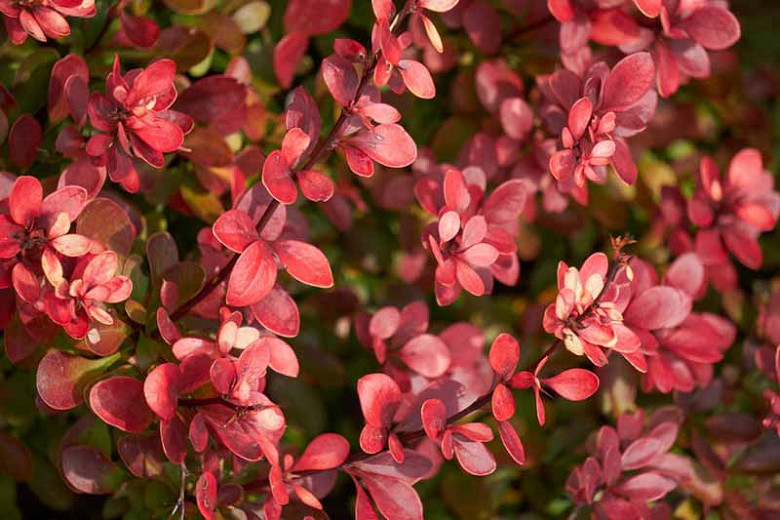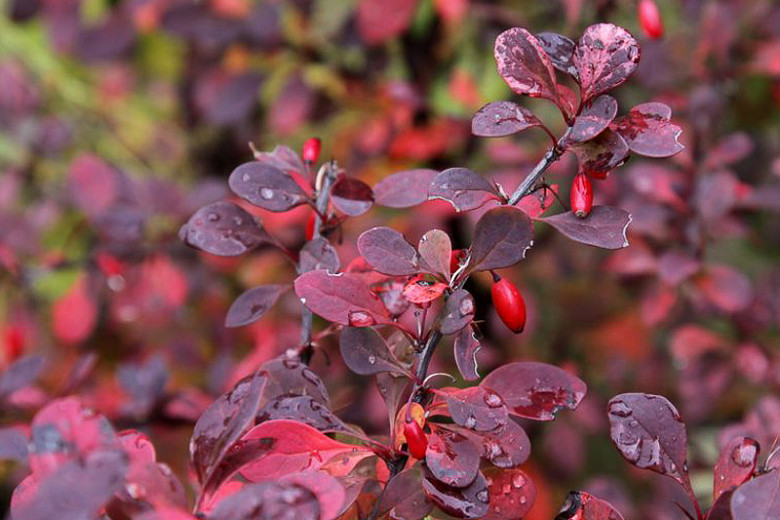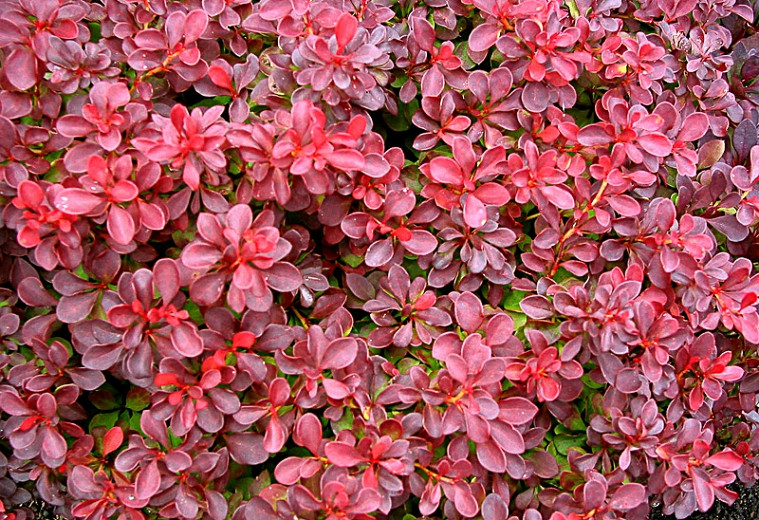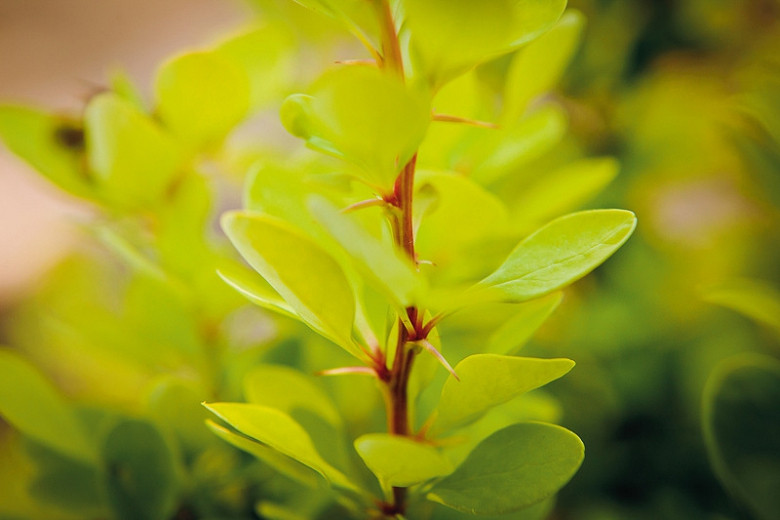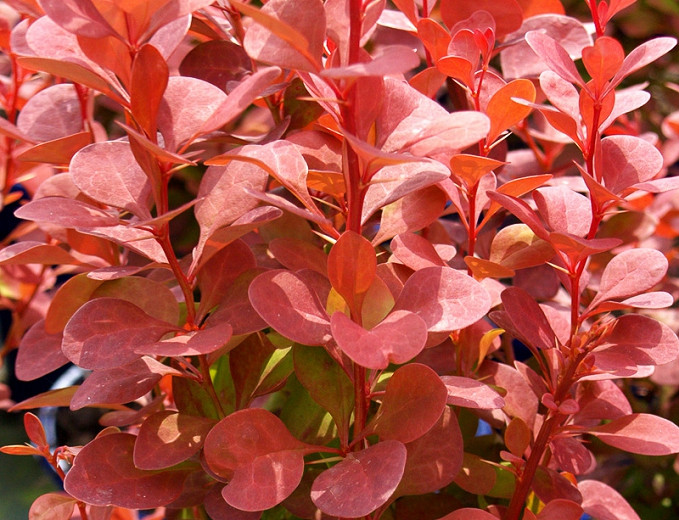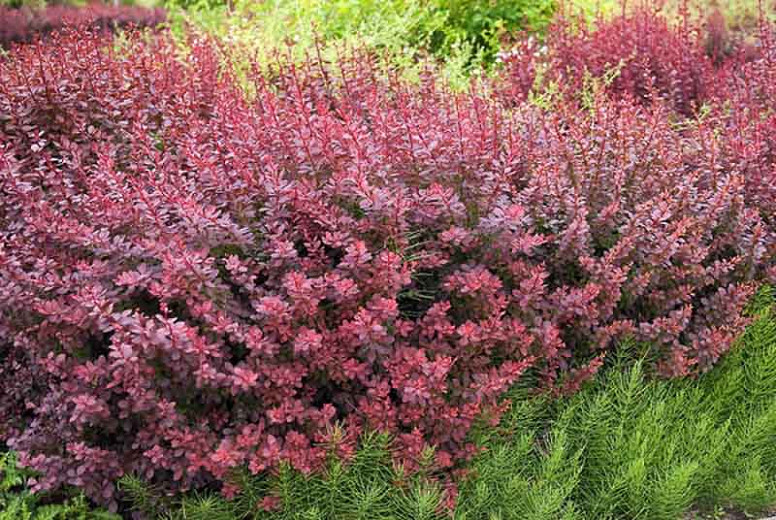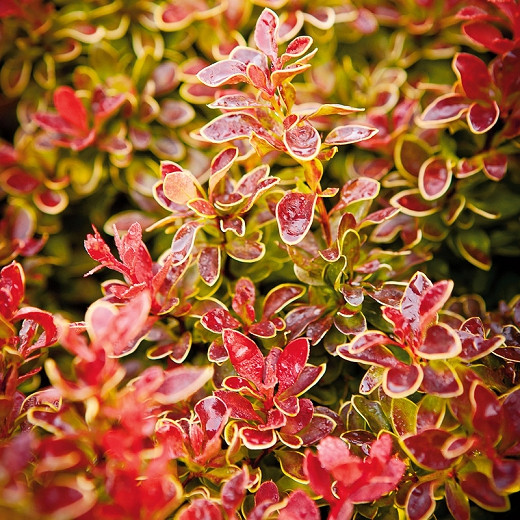Berberis thunbergii f. atropurpurea (Purple Japanese Barberry)
Berberis thunbergii f. atropurpurea (Purple Japanese Barberry) is always a spectacular addition to the landscape where it brings a strong color accent from spring to fall. This dense, arching, deciduous shrub features broadly oval, reddish-purple leaves which turn into brilliant red or red-orange shades in the fall.
Berberis thunbergii f. atropurpurea (Purple Japanese Barberry) is always a spectacular addition to the landscape where it brings a strong color accent from spring to fall. This dense, arching, deciduous shrub features broadly oval, reddish-purple leaves which turn into brilliant red or red-orange shades in the fall. Tiny, scented, pale yellow flowers appear in mid-late spring, but are insignificant in comparison to the foliage. They are followed by an abundant crop of bright red berries in the fall, which are attractive to birds and often remain on the spiny stems after the leaves have fallen, therefore extending the season of interest of this ornamental shrub through the winter.
- Grows from 12 in. to 6 ft. high and across (30-180 cm), depending on varieties.
- Performs best in full sun or part shade, in average, dry to medium, well-drained soils. Japanese Barberry is not fussy about soils provided they are not soggy or wet. Good drainage is essential. Drought, pollution, deer, clay or dry soil tolerant!
- Fairly pest-free, easy to grow and to care for. May be subject to powdery mildews.
- Japanese Barberry is very adaptable and an excellent choice as a single specimen plant or massed in beds, borders, as an informal screen or hedge.
- Propagate by semi-hardwood cuttings.
- Ingestion may cause mild stomach upset.
- Berberis thunbergii species is invasive in the United States. The invasive potential of the more than 40 cultivars of Japanese Barberry is not well known.
- Discover beautiful U.S. native plant alternatives.
Requirements
| Hardiness | 4 – 8 |
|---|---|
| Heat Zones | 5 – 8 |
| Climate Zones | 2, 2B, 3, 3A, 3B, 4, 5, 6, 7, 8, 9, 10, 11, 12, 13, 14, 15, 16, 17, 18, 19, 20, 21, 22, 23, 24, A3 |
| Plant Type | Shrubs |
| Plant Family | Berberis – Barberries |
| Exposure | Full Sun, Partial Sun |
| Season of Interest | Spring (Mid,Late)Summer (Early,Mid,Late)FallWinter |
| Height | 1' – 6' (30cm – 180cm) |
| Spread | 1' – 6' (30cm – 180cm) |
| Water Needs | Low, Average |
| Maintenance | Low |
| Soil Type | Chalk, Clay, Loam, Sand |
| Soil pH | Acid, Alkaline, Neutral |
| Soil Drainage | Moist but Well-Drained, Well-Drained |
| Characteristics | Showy, Fruit & Berries |
| Tolerance | Clay Soil, Deer, Drought, Dry Soil |
| Attracts | Birds |
| Garden Uses | Beds and Borders, Hedges and Screens |
| Garden Styles | City and Courtyard, Coastal Garden, Informal and Cottage |


